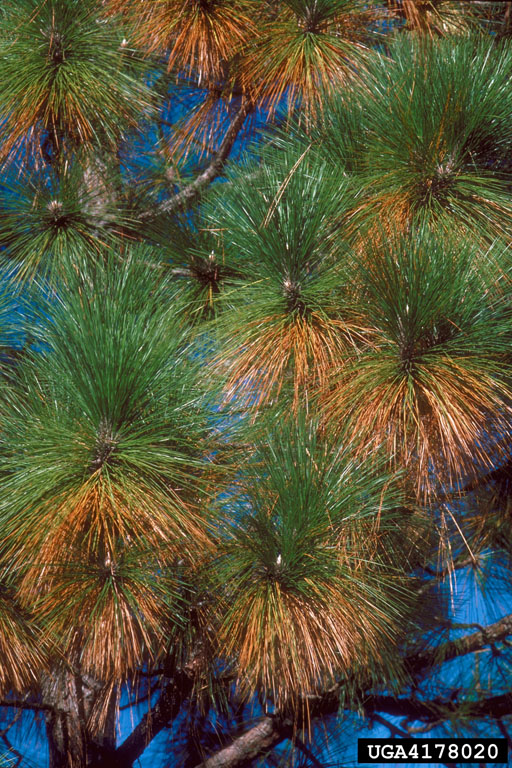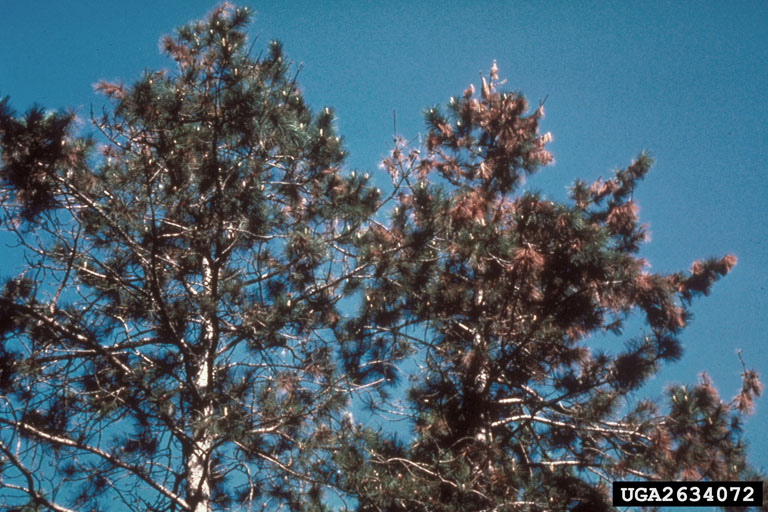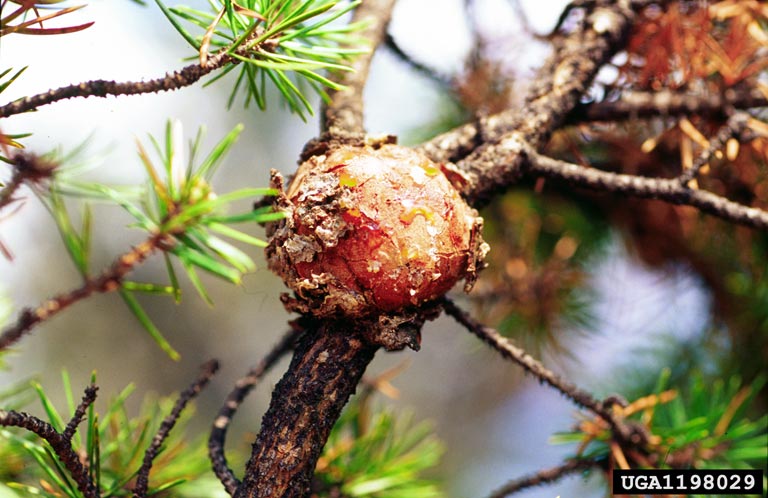Pine trees are among the most majestic trees of the forest, and they can add beauty and elegance to residential landscapes. However, they are also susceptible to various diseases that lead to discoloration, yellowing, and premature needle shedding. Pine tree diseases weaken the trees, making them vulnerable to pests and other infections that can ultimately kill them. In this blog post, we will discuss some common pine tree diseases, their symptoms, and how to treat and protect your pine trees.
#1) Needlecast Fungus

Photo credit: Erich G. Vallery, USDA Forest Service – SRS-4552, Bugwood.org
One of the most common pine tree diseases is needlecast fungus. This disease is caused by a group of fungi that attack the needles of the tree, causing them to yellow and fall off. The fungus usually develops in warm and humid weather conditions and thrives in poorly ventilated areas. The best way to treat needlecast fungus is to improve air circulation around your trees by trimming overhanging branches or thinning out surrounding vegetation. We can also treat your pine trees preventively for this disease.
#2) Diplodia Tip Blight

Photo credit: USDA Forest Service, USDA Forest Service, Bugwood.org
Diplodia tip blight is a disease that affects the growing tips of pine trees, causing them to become brown and brittle. The disease is caused by a fungal pathogen that kills the needles and then invades the twigs and small branches. Diplodia tip blight usually affects the lower branches of the tree first and then progresses upwards. If left untreated, the disease can lead to branch death and tree decline. The best treatment is to prune the affected branches and destroy all debris to prevent further infection.
#3) Rust

Photo credit: Joseph OBrien, USDA Forest Service, Bugwood.org
There are several types of rust that affect pine trees, but they can all cause some unsightly symptoms on your trees. Rust is a fungal disease that typically affects pine trees during humid weather conditions. It usually begins with small, yellow spots on the needles of the trees, which then develop into orange or reddish-brown bumps. Rust can spread rapidly throughout the tree, causing the needles to fall early and ultimately harm the tree’s overall health. Treatment can be effective for more several fungal infections, while others cause little to no damage and can be left alone. For more aggressive types of rust, the best way to contain the spread of fungal spores is to destroy infected pine needles and remove infected branches.
#4) Root Rot
The term “root rot” encompasses a group of common fungal diseases that affect the roots of many tree species. It’s typically caused by over-watering of the tree, heavy soil, and poor drainage. The first symptom of root rot is the tree’s loss of vigor, followed by needle discoloration, early needle shedding, and an overall decline in growth. The best treatment for root rot is prevention by ensuring the tree is planted in well-draining soil or raised beds.
How to Prevent Pine Tree Diseases:
The best way to prevent pine tree diseases is through proper and regular tree maintenance. Regularly inspect your tree for signs of disease or pest infestation. Water your pine trees evenly and avoid overwatering to prevent root rot. Thin out surrounding vegetation and avoid overcrowding to promote air circulation. Apply Bio-Stimulants to your pine trees and have them pruned regularly to remove dead or diseased branches.
In conclusion, if you notice unusual symptoms on your pine trees, they may be suffering from a disease. Prompt identification is necessary to determine a treatment plan as needed and preserve the health and beauty of your pine trees. While regular tree maintenance and proper care can prevent many pine tree diseases, professional services are also available to help keep your trees disease-free and looking their best. Remember that early detection and action are key to the long-term health and well-being of your trees.


